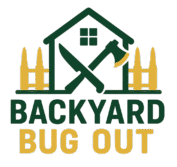Why a rainwater collection system? When most people think about prepping, they picture flashlights, food buckets, or bug-out bags — but water is the one resource that actually runs out first. FEMA recommends a gallon per person per day. Do the math for a week, and that’s seven gallons per person — and that’s before watering a garden or washing dishes.
That’s why I built my own rainwater collection system. It’s legal, simple, and keeps my family from relying completely on city water when things go sideways.
💧 Why Every Prepper Needs a Rainwater Collection System
When the grid goes down, water pressure drops with it. Bottled water flies off shelves, and panic sets in. Having a backyard rainwater harvesting setup gives you a renewable off-grid water supply you control — clean water that keeps flowing long after the pumps stop.
Beyond prepping, it just makes sense: it saves money, reduces runoff, and gives you independence right in your yard.
⚖️ Check Local Laws First
Rainwater laws vary, but most states now allow collection as long as your DIY rain barrel isn’t hooked to sewer or plumbing systems. A quick call to your local code office or search for “rainwater collection laws + [your state]” can clear things up.
Staying legal means you’ll never have to dismantle a setup you spent time and money building.
🧰 What You’ll Need (Under $100)
- 55-gallon food-grade barrel or heavy trash can
- Gutter diverter kit
- Fine mesh screen (keeps bugs and debris out)
- Spigot or hose bib
- Cinderblocks for elevation
You can find barrels cheap at farm-supply stores or online marketplaces. A little creativity goes a long way in DIY rainwater collection systems.
🪛 How to Build It (and Why Each Step Matters)
- Place the barrel under your downspout.
It captures the cleanest water — straight from your roof. - Install the diverter kit.
Prevents overflow and keeps water away from your foundation. - Add a mesh screen.
Blocks leaves, pollen, and mosquitoes. - Drill and seal a spigot near the bottom.
Gravity pressure gives you easy access without a pump. - Test it during the next rain.
You’ll be surprised how fast it fills — 30 gallons in a light storm is common.
That’s a reliable off-grid water supply you built yourself.
🧼 Keeping Water Clean and Safe
Rainwater is naturally clean, but rooftops aren’t. Let the first bit flush out before collecting. When I plan to use my water for drinking or cooking, I treat it following CDC-approved bleach ratios:
- Add 8 drops of unscented bleach per gallon of clear water.
- Stir and let it sit 30 minutes.
- If there’s no faint chlorine smell, add 4 more drops and wait another 15 minutes.
Bleach kills most bacteria and viruses — the same way city water is treated. Replace your bleach yearly and label barrels “Non-Potable” unless filtered. That’s smart water prepping.
🌿 Everyday Uses That Save Money
Even when there’s no emergency, I use my rainwater to water plants, rinse tools, and top off my outdoor sink. It keeps my prepping rotation fresh and my bill lower. Every rainfall refills my independence.
🧭 Final Thoughts
A rainwater collection system is more than a weekend project — it’s a quiet form of freedom. Every drop you capture is one less you depend on from the grid, one more layer of security for your family, and one step closer to real resilience. When you’ve built it yourself, you understand your own system inside and out — no mystery, no middleman, no panic when the tap runs dry.
Whether you’re a seasoned prepper or just someone who likes being ready for whatever life throws at you, collecting rainwater connects you to something bigger: self-reliance. It’s a reminder that preparedness isn’t fear — it’s foresight. It’s about building habits and systems that keep working even when everything else stops.
The best part? You don’t need to live off-grid or own acres of land to start. You can build your backyard rainwater collection system right where you are — cheap, legal, and totally doable. It’s a small step that pays off every time it rains, and a big step toward peace of mind that money can’t buy.
✅ Want more backyard rainwater harvesting and prepping tips?
Grab your free 3-Day Survival Checklist at BackyardBugOut.com and start building your independence one drop at a time.
